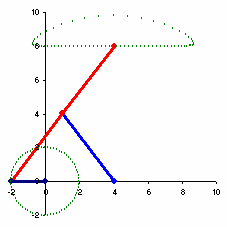Chain Drives Design (Part 2)
Nominal Tensile Load
The main consideration for all types of chain is the nominal tensile load that is required to perform the basic function. The nominal tensile load generally fluctuates in a regular cycle. For example, the chain tension from the nominal load in a chain drive increases as the chain moves around the driven sprocket. The tension remains basically constant at a high level as the chain runs through the tight strand. Tension then decreases as the chain moves around the driver sprocket. It then remains basically constant at a low level as it runs through the slack strand. This cycle then repeats again and again.
Shock Load
Shock loads are caused by the characteristics of the power source and the driven machinery. They occur repeatedly in a regular cycle, usually one or more times in each shaft revolution. They usually must be added to the nominal tensile load. Service factors are used to account for commonly known shock loads in most chain drives and conveyors.
Inertia Load
As the term is used here, inertia loads are different from shock loads. Inertia loads are the occasional loads imposed on the chain by unusual, and often unexpected, events. They may come from starting a heavily loaded conveyor or a drive with a large flywheel. Or they may be caused by a sudden momentary jam in the driven machine or conveyor. The drive or conveyor designer should calculate expected starting loads and be sure that they are never more than the yield strength of the chain.
Centrifugal Tension
In high-speed drives, centrifugal force is generated as the chain travels around the sprockets. Centrifugal force also may be generated by the chain’s travel over a curved path between sprockets. The tensile load from centrifugal force may have to be added to the nominal tension when appropriate.
Catenary Tension
The weight of that portion of the chain that hangs in a catenary generates additional tensile loads in the chain. The tensile load from the catenary tension must also be added to the nominal tension when appropriate. Catenary tension is usually a minor consideration in drives, but it may be a major consideration in conveyors.
Chordal Action
As the chain wraps a sprocket, it effectively forms a regular polygon. That causes the chain strand to rise and fall each time a joint engages a sprocket tooth. This motion is called chordal action. Chordal action also causes the chain speed to increase and decrease each time a joint engages a sprocket tooth.
Vibration
Chain vibration can cause very large increases in chain tensile loading if the vibration occurs at or
near the natural frequency of the chain. The added tension from vibration can sometimes be as
large as the nominal tensile load.
Source: Standard Handbook of Chains: Chains for Power Transmission and Material Handling, Second Edition (Dekker Mechanical Engineering)



Comments